Strong Bird Netting: Essential for Crop Protection
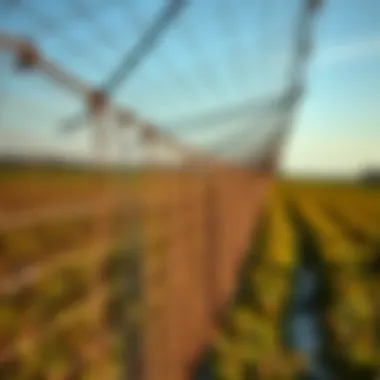
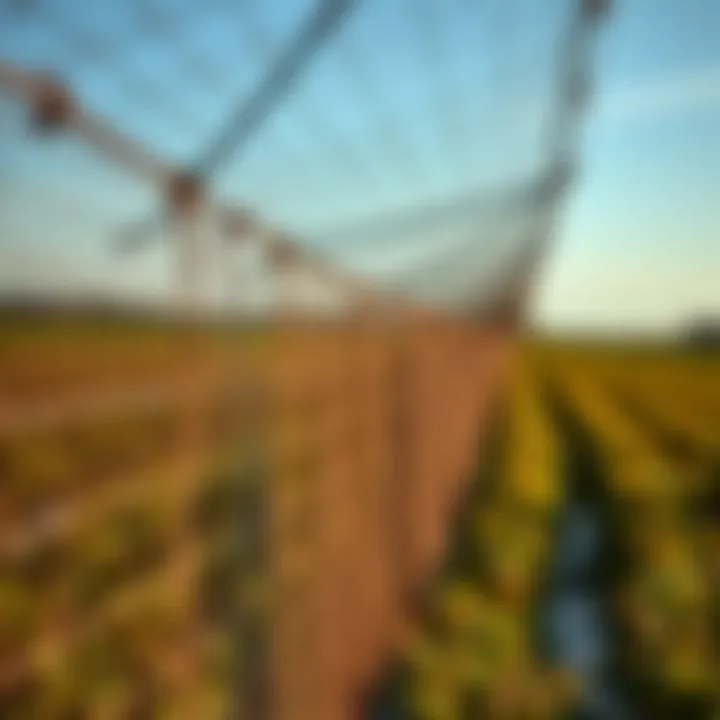
Intro
In the realm of agriculture, protecting crops from avian pests has always posed a significant challenge. With the sheer variety of birds that can wreak havoc on fields, farms require effective solutions to safeguard their hard work. Strong bird netting serves as a vital tool in this fight against feathered foes, acting as a barrier that can protect fruit trees, vegetable patches, and grain crops alike.
Bird netting isn't just about keeping pests at bay; it’s about understanding the interplay between nature and agriculture. The right netting can not only save a farmer's harvest but also enhance the overall yield, making it a topic worth diving into.
Topic Overview
Definition and Importance
Bird netting refers to mesh materials designed to create protective barriers around crops to prevent birds from accessing them. Its importance in agriculture can’t be overstated. Farmers who implement effective netting strategies can see significant improvements in both their crop quality and quantity.
Without this protective measure, birds can quickly strip a field clean of fruits or seeds, leading to devastating financial losses. Moreover, strong bird netting contributes to sustainable farming practices by reducing the need for chemical repellents or other more harmful deterrents.
Brief History and Evolution
Historically, farmers relied on scarecrows and noise to ward off birds. However, as agriculture evolved, the need for more effective measures became apparent. The first nets were basic and crafted from natural fibers. Over time, advancements in materials and technology led to the development of high-performance synthetic nets, which are durable and weather-resistant.
Today, bird netting is available in various sizes and strengths, designed to cater to specific environments and types of crops. This evolution reflects not just a response to pest problems but also an awareness of sustainable agricultural practices.
Key Techniques and Innovations
Sustainable Farming Practices
Utilizing strong bird netting is part of a broader strategy of sustainable farming. Rather than relying on pesticides, farmers can opt for netting to protect their crops, contributing to an overall healthier ecosystem. Implementing netting solutions reduces chemical runoff, thereby maintaining soil integrity.
This practice plays an essential role in organic farming circles, enhancing not only the sustainability of farming practices but also the market value of the produce.
Advanced Agronomic Technologies
The rise of technology in farming has brought forth innovations in netting materials. New fabrics are often lightweight yet robust, making them easy to install and remove while ensuring durability against diverse weather conditions. These materials are designed for optimal airflow and light penetration, maintaining healthy growing conditions for the crops underneath.
Practical Applications
Step-by-Step Guides
When it comes to installing bird netting, a few basic steps can streamline the process:
- Assess Your Field: Identify the areas most susceptible to bird damage.
- Choose the Right Netting: Consider the types of birds in your region and select appropriate mesh size.
- Prepare Your Crops: Make sure the plants are sturdy enough to withstand the covering.
- Install Support Structures: Use hoops or frames if necessary, ensuring the netting is elevated above the plants.
- Secure the Edges: Ensure all sides are well anchored to prevent birds from entering underneath.
Case Studies or Real-World Examples
Many farmers have seen notable successes using strong bird netting. For instance, a fruit orchard in California reported a 30% increase in its harvest after installing netting, demonstrating its effectiveness in protecting crops from bird interference. Another agricultural enterprise in Oregon transitioned to using advanced netting techniques after encountering repeated losses, achieving a complete turnaround in their crop outcomes.
The growing trend towards netting reflects broader changes in agricultural practices, signaling a shift toward integrated pest management and environmentally friendly farming methods. As more farmers adopt such strategies, the dialogue around sustainable agriculture continues to evolve, fostering stronger communities committed to innovative practices.
"Investing in strong bird netting not only saves crops but also protects the farmer’s livelihood. It's an investment in sustainability." - Agricultural Expert
The Necessity of Bird Protection in Agriculture
The realm of agriculture faces numerous challenges, with pests and wildlife being among the most prevalent threats. When we talk about crop protection, birds often come to light, especially considering their large populations and the impact they can have on agricultural yields. This is where understanding the necessity of bird protection becomes crucial.
Understanding Crop Vulnerability
Crops are vulnerable not only due to diseases and pests but also due to various wildlife, with birds being one of the most significant contributors to crop loss. From the golden wheat fields to the lush fruit orchards, birds can wreak havoc in a matter of days. It's not just a matter of occasional nibbling; these birds are often sharp beaks and gluttonous appetites can defoliate entire plants. In fact, research indicates that certain crops like strawberries and sunflowers can experience yield reductions of up to 90% if left unprotected.
Farmers must recognize that the conditions all around contribute to crop vulnerability. Factors like the specific growing season, weather, soil type, and crop variety play integral roles. Moreover, the geographical location can dictate the types of birds that might be prevalent and their migration patterns. By grasping these vulnerabilities, a farmer can better anticipate challenges and implement targeted mitigation strategies, such as bird netting.
Impact of Bird Populations on Yields
The effects of bird populations on agricultural yields cannot be overemphasized. If you consider a bustling farm, each bird arrival not only poses a threat but also serves as a signal— a call to arms for farmers. Over time, bird populations not only peck at crops but they can also spread seeds of invasive plants, creating double trouble.
- More than just consumption: Birds can go beyond just eating fruits and seeds; they can stomp on seedlings, cause physical damage, and even create wastelands by their mere presence.
- Economic Consequences: The financial implications multiply quickly. A farmer might find himself needing to invest more in pest control, herbicides, or in extreme cases, accepting diminished yields, ultimately affecting family livelihood.
- Diversity of birds: Different birds pose distinct threats. For instance, large flocks of starlings can descend just as fast as a flash flood, while smaller birds may be more subtle, leading to cumulative damage that adds up over time.
Overview of Bird Netting Solutions
Bird netting solutions play a crucial role in safeguarding agricultural yields from the threats posed by birds. With their keen eye for ripe fruits and grains, birds can quickly become significant pests. This section explores various bird netting types, discusses material differences, and guides growers in selecting appropriate netting for their crops. Understanding these aspects is vital for anyone involved in agriculture, whether you are managing a small garden or operating a large commercial farm.
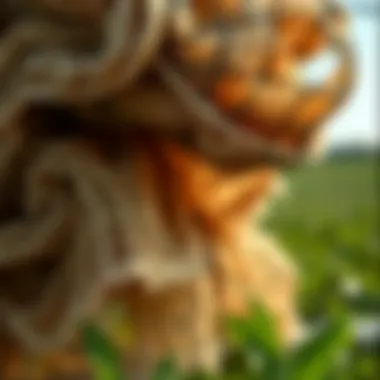
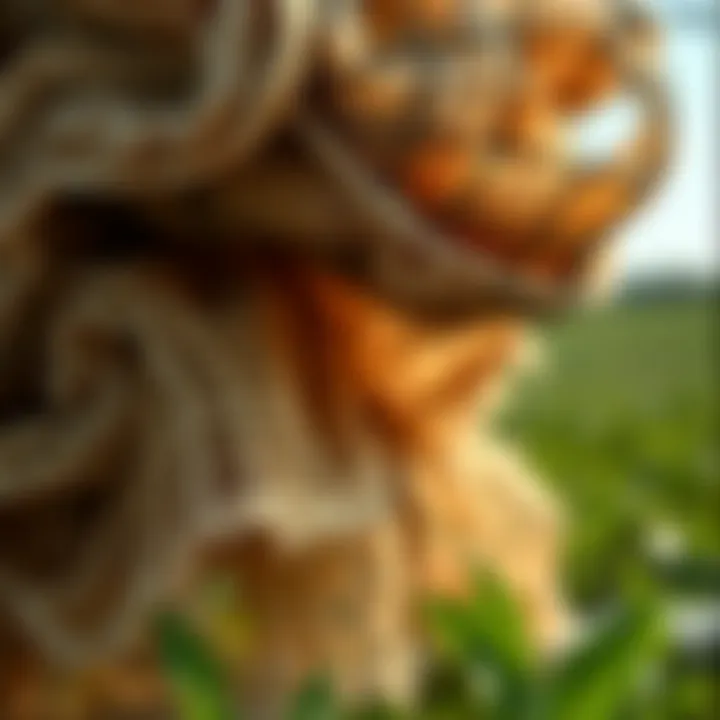
Prologue to Bird Netting Types
Selecting the right type of bird netting is like choosing the right tool for the job. Different netting types exist, each with its own strengths and utility. Here are some commonly used types of bird netting:
- Polyethylene Netting: Known for its lightweight nature, this type is typically easy to handle and can protect a range of crops from various bird species.
- Knotted vs. Knotless: Knotted netting is generally stronger and more durable, while knotless netting offers a smoother surface that provides fewer entanglement risks for birds.
- Reflective Netting: This unique netting uses shiny materials to deter birds through visual stimuli. It can be particularly effective in reducing reclamation of fruit trees.
These types cater to different needs. When assessing your options, consider factors such as local bird species, crop type, and the specific challenges you face on your farm.
Comparative Analysis of Netting Materials
Not all netting materials are created equal. Each comes with unique properties that affect effectiveness, durability, and cost. Here’s a closer look at some common materials used in bird netting:
- Polypropylene: This is a popular choice due to its high durability and resistance to degradation. It holds up well, even in extreme conditions.
- Polyethylene: Although lighter than polypropylene, it's usually less durable but can deliver adequate protection for crops if regularly maintained.
- High-Density Polyethylene: This material is exceptional for long-term use. It resists UV light and prolonged exposure to the elements, making it ideal for farmers who require reliability over several growing seasons.
Each material offers distinct advantages, but your choice should align with your specific agricultural needs and local conditions. Cost, too, plays a significant role, as some may find the upfront investment of higher-quality materials justified by their longevity.
Choosing the Right Netting for Specific Crops
Different crops face varying threats from bird species, which can affect how you should protect them. Here are some considerations for choosing the right netting:
- Fruit Trees: For cherry or blueberry growers, netting that covers the entire tree is essential. A good option here might be larger mesh sizes to ensure larger birds can’t reach the fruit but small enough to keep smaller birds out.
- Vegetable Crops: For newly sowed seeds and tender young plants, lightweight netting is beneficial. This can allow sunlight and rain through while blocking birds from pecking at tender seedlings.
- Field Crops: In wide-open fields, heavier netting that can withstand wind is necessary. Make sure that the choice of netting aligns with the scale of farming—larger fields will require netting systems that are robust enough to resist environmental challenges.
As you consider these factors, remember that the ultimate goal of bird netting is not just to keep birds at bay, but also to maintain crop health. The right selection means the difference between a bountiful harvest and significant losses.
"The right bird netting is as vital to a farmer as the right fertilizer; it ensures that productivity is maximized while protecting against the unseen threats overhead."
By analyzing your agricultural needs and familiarizing yourself with the range of available options, you can make informed decisions to enhance your crop protection strategies.
Key Features of Strong Bird Netting
When it comes to safeguarding crops from unwanted avian pests, strong bird netting plays a crucial role. Understanding its key features allows farmers to make informed decisions that positively impact crop production. Not only does it create a protective barrier against birds, but it also contributes to the longevity and efficiency of agricultural practices. Each feature brings specific benefits, which are essential to grasp for effective pest management.
Durability and Weather Resistance
Durability is one of the most important aspects of bird netting. Given that bird netting is exposed to various weather conditions—including intense sunlight, rainfall, and harsh winds—it must withstand the elements. Strong bird netting is typically made from high-density polyethylene or polypropylene materials, known for their resilience. This means farmers don’t have to worry about their nets breaking down after a few seasons.
Farmers often experience frustrations when nets tear or degrade quickly, leading to increased costs and labor for replacements. A good quality net can last several years with the right maintenance. Not only does this save time, but it also enhances the overall efficiency of pest control.
Additionally, weather resistance ensures that the netting can hold up against environmental challenges. Heavy winds can cause weaker nets to flail around, leading them to become dislodged or damaged. By choosing durable netting, farmers reduce maintenance costs and time spent on repairs.
"Choosing quality materials is not just a monetary decision; it's an investment in the future of your crops."
Size and Mesh Design Significance
The size and mesh design of bird netting are vital elements that directly relate to its effectiveness. A tightly woven mesh can catch smaller birds like finches or sparrows, while larger gaps may allow them to slip through, undermining the netting's purpose.
In terms of size, netting typically comes in various mesh sizes. Farmers need to consider the types of birds inhabiting their area. For instance, orchards might benefit from a finer mesh to keep out smaller fruit-eating birds, whereas open fields might require larger openings to allow beneficial insects to pass through while still deterring birds. Proper mesh design is especially significant in organic farming, where maintaining natural pest balances is key to crop health.
Furthermore, the netting's shape influences how well it can serve its purpose. Some designs incorporate a stretched net, providing a barrier high above the crops. This prevents birds from accessing the vegetables or fruits while also allowing air and sunlight to reach them, thus promoting overall growth.
UV Protection and Longevity
When it comes to bird netting, UV protection is integral for ensuring long-term usability. Netting without UV inhibitors will deteriorate faster when exposed to sunlight. The constant battle against the sun’s rays can lead to increased wear and tear, resulting in cracks or brittleness in the material.
High-quality bird nets come with UV stabilization, which allows them to withstand these harsh conditions, thereby increasing their lifespan. This feature ensures that the netting remains effective at blocking out birds while serving its purpose for multiple growing seasons.
Farmers often overlook this aspect, thinking all netting materials can endure sun exposure equally, but that can lead to costly mistakes. Investing in UV-resistant bird netting ultimately translates into fewer replacements and diminished operational costs in the long run.
In summary, understanding these key features of strong bird netting—durability and weather resistance, size and mesh design significance, and UV protection—can help farmers make better choices. Ensuring high-quality materials and designs means better crop protection and ultimately more fruitful yields.
Installation Techniques for Optimal Effectiveness
Implementing strong bird netting is not merely about acquiring the material; how it’s installed is crucial for its effectiveness. Proper installation techniques ensure that the netting performs its job well, providing the necessary protection for crops against birds. If not done correctly, even the highest quality netting can fail, which can lead to crop loss and financial setbacks for farmers.
Preparing the Site for Installation
Before laying down the netting, preparing the site is essential. Farmers should begin by assessing the landscape where the netting will be used.
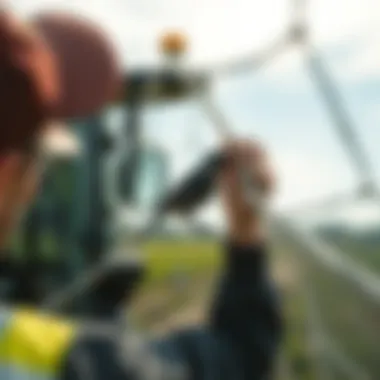
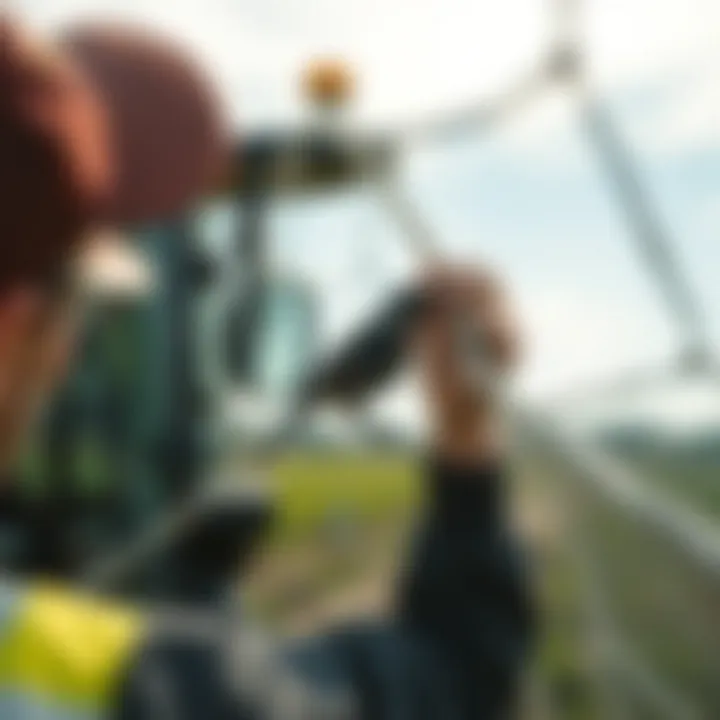
- Clear the Area: Remove any debris, rocks, or old fencing that might interfere with the installation of the netting.
- Check for Obstacles: Identify any trees, buildings, or poles nearby that might cause shadows or lead to birds landing on the netting itself. Birds tend to gather in places where they feel safe, so minimizing such features can keep them at bay.
- Measure Precisely: Taking accurate measurements of the area helps in cutting the netting to the correct size. Oversized or undersized nets can create gaps and compromises in protection, giving birds a way in.
Taking time to prepare the site properly can save you from a lot of trouble down the road.
Methods for Securing Bird Netting
Once the site is ready and the netting is cut to size, the next vital step is securing the netting effectively. Here are some common methods:
- Poles and Frames: Setting up poles or frames around the perimeter can help lift the netting, creating enough clearance over the crops. This also adds stability, ensuring the netting won’t sag under weather conditions.
- Weights and Anchors: Using weights or anchors at the corners of the netting will help prevent it from blowing away or being displaced by strong winds. Heavy stones or specialized net weights can work wonders.
- Ties and Clips: Employing zip ties or clips to attach the netting to the support structure is another effective way to keep it secure. This provides flexibility; should adjustments be necessary, it's easy to loosen and reattach the netting as needed.
Common Mistakes in Installation and How to Avoid Them
Even experienced farmers make mistakes when it comes to bird netting installation. Here are a few pitfalls and how to steer clear of them:
- Ignoring Weather Conditions: Not considering windy days can lead to slack netting or netting that’s too tight. Assessing the weather conditions ensures that netting is applied at the right tension.
- Neglecting to Inspect the Netting: Failure to check for damaged sections before installation may cause gaps through which birds can enter. A thorough inspection can save a lot of grief later.
- Insufficient Height: Not placing the netting high enough above the crops is a common blunder. Birds need enough space to feel safe; low-hanging netting can deter them if they feel threatened.
By having a well-structured installation plan and paying attention to these details, farmers can significantly enhance the efficacy of their bird netting systems. This in turn protects their crops and optimizes agricultural yield.
Maintenance and Care of Bird Netting
Keeping strong bird netting in prime condition is a cornerstone of effective crop protection. Routine maintenance not only extends the life of the netting but also ensures that it functions as intended. By caring for the netting properly, farmers can avoid potential pitfalls that may lead to crop losses.
Routine Inspections and Repairs
Regular inspections of bird netting are essential to maintain its integrity and effectiveness. Ideally, these checks should be conducted at least once a month, more frequently during peak bird activity seasons.
- Look for Physical Damage: Check for any rips, tears, or abrasions in the netting. Even small holes can become larger over time, allowing birds to wreak havoc on crops.
- Frame Stability: Ensure that the supporting structures are secure and not leaning or corroded. When the frame is compromised, so is the entire system’s integrity.
- Local Wildlife Interaction: Observe any signs of critters trying to breach the netting. Their attempts may highlight weaknesses in your setup.
A proactive approach can save farmers from costly damage. Make patching up small tears a habit; using strong repair tape or sewing kits specifically designed for netting can be handy solutions. Taking care of these minor issues before they escalate is a smart strategy.
Storage Tips for Seasonal Netting
When the growing season comes to a close, how you store your bird netting is just as critical as its installation. Proper storage can prolong the netting's lifespan and ensure it's effective for the next planting season.
- Clean Before Storing: Ensure the netting is free from debris, dirt, or any organic material. Leftover grime can attract pests and lead to degradation.
- Dry the Netting: Always allow the netting to dry completely before folding it. Moisture can promote mold growth, which can weaken the material.
- Store in a Cool, Dry Place: Avoid areas exposed to extreme temperatures and direct sunlight. Over time, prolonged exposure can deteriorate the netting's structural integrity.
Using a breathable storage bag can protect the netting from dust and other contaminants while preventing its form from being compromised.
Signs of Wear and Replacement Guidelines
Recognizing when it's time to replace bird netting is pivotal for maintaining crop protection. Farmers should be vigilant in understanding the signs indicating that the netting has reached the end of its usable life.
- Fading Color: If the color of the netting has significantly faded, UV damage may have occurred, compromising its protective qualities.
- Fragility: If the netting feels brittle or starts breaking easily when pulled, it may no longer withstand the pressures of the environment.
- Load Bearing: Check if the netting still maintains its shape under tension; sagging can be a sign of wear and suggests it may need replacing.
Farmers should document the lifespan of their netting and consider setting a replacement schedule based on their findings. Planning ahead ensures that they always have a reliable barrier ready to protect their crops.
In short, maintaining and caring for bird netting isn't just about prolonging its life; it's about investing in your crop's prosperity. This investment pays off in yields and quality harvested.
By implementing these strategies, farmers create a sustainable approach to pest management, safeguarding their crops against avian threats effectively.
Challenges Encountered with Bird Netting
Bird netting serves as a crucial line of defense for crops against hungry avian pests, but it is not without its challenges. Addressing these issues is essential for farmers and agricultural specialists who aim to maximize the effectiveness of their netting solutions. Understanding the potential hurdles helps in preempting problems that could arise during the installation and maintenance phases. By identifying and mitigating these challenges, one can ensure that bird netting does not only protect crops but also enhances overall agricultural productivity.
Environmental and Weather-Related Issues
Environmental conditions can wreak havoc on bird netting. From strong winds to heavy snowfall, various weather phenomena can either damage the netting or lessen its effectiveness. Rain and humidity can promote mold buildup on netting materials, compromising their integrity. In regions where severe storms are common, the netting must be securely anchored, or it risks being blown away. Farmers in coastal areas might face an added challenge of corrosion, especially if using metal fasteners or frames designed to hold the netting in place.
- Key considerations include:
- Material Selection: Choosing high-quality, weather-resistant materials can make a world of difference. Netting made from UV-stabilized polyethylene can withstand sun exposure longer, while heavy-duty nets resist tearing.
- Installation Techniques: Proper installation is essential. Using appropriate fittings can help maintain tension in the netting, minimizing flapping caused by wind.
Moreover, it’s worth observing that local wildlife is adapted to environmental cues. For instance, in areas prone to high winds, birds may learn to navigate or find weak points in the netting over time, making reinforcement crucial.
"A stitch in time saves nine." Proper attentiveness during the initial installation often helps avoid trouble down the road.
Bird Adaptations and Evasion Tactics
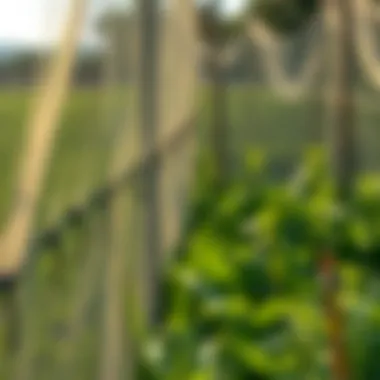
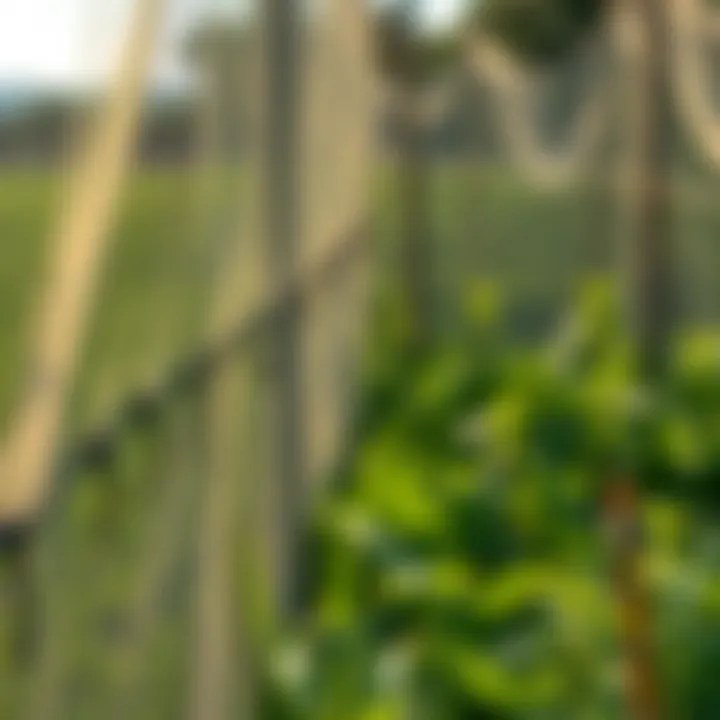
Birds are resilient creatures, and over time, they develop strategies to evade netting meant to ensnare them. Understanding these behavioral adaptations can significantly improve the success rate of bird netting in agriculture. Birds may learn to avoid netting entirely, developing new routes to reach crops that are perceived as safe.
Types of birds might exhibit unique evasion tactics. For instance, small sparrows are agile and can squeeze through small openings, while larger species like crows may work in teams to exploit weaknesses in the netting. It’s noted that certain birds, rather surprisingly, can even recognize the shapes and colors of traps set up to deter them, adapting their behavior accordingly.
- To combat these tactics, consider:
- Implementing multi-layered approaches, combining netting with other deterrent methods can increase overall efficacy.
- Adding Visual Deterrents: Reflective tapes or other shiny objects can confuse birds, causing them to rethink their approach.
- Regular Monitoring: Keeping an eye on bird behavior around the nets can help in identifying any new adaptation trends. This can inform necessary adjustments to the setup.
Technological Advancements in Bird Netting
The landscape of agriculture is ever-evolving. One of the lesser-discussed yet vital aspects of this evolution is the improvement being made in bird netting technology. Strong bird netting is no longer just about keeping pesky birds at bay; it has become a crucial element in maximizing crop yields and ensuring that farmers can protect their investments.
Innovative Materials and Designs
Material innovation plays a pivotal role in enhancing the efficacy of bird netting. Traditional nets, often made from less durable materials, have given way to advanced polymers and synthetic fibers that withstand various environmental stressors. For instance, polyethylene and polypropylene are now common choices due to their lightweight properties and resistance to UV rays, ensuring longevity even in harsh sunlight.
Additionally, the mesh design has also seen significant improvements. Rather than a one-size-fits-all approach, different mesh sizes and configurations can now cater to specific crops. For example, finer meshes are perfect for smaller fruits like blueberries, as they can deter even the tiniest of birds without hindering air circulation or sunlight access to the plants. This customization means that farmers can select netting that not only serves the purpose of bird deterrence but also supports optimal plant conditions. When designs focus on both functionality and practicality, farmers can expect better crop results and reduced maintenance.
Automating Installation and Maintenance
The challenge of installing bird netting can often deter even the most committed farmer. Enter the age of automation. New technologies are streamlining the installation process, making it less labor-intensive and more efficient. For instance, automated systems equipped with sensors can determine the best time for deployment based on bird activity levels and weather conditions. This reduces the chances of improper installation and the consequent potential damage to crops.
Moreover, maintenance is another area where automation shines. Drones are being integrated into farming routines for aerial inspections of netted areas. This allows for early detection of wear and tear, ensuring that the netting can be repaired or replaced before it becomes a serious issue. With timely maintenance, farmers can enjoy uninterrupted crop protection.
The integration of smart technology not only aids in installation but also in ongoing maintenance, reducing the workload for farmers. Clear guidelines and user-friendly interfaces help even non-tech-savvy individuals to reap these benefits. Regardless of the size of the farming operation, these advancements are set to level the playing field, making effective bird control accessible to all.
As an essential component of modern agricultural practice, technological advancements in bird netting are reshaping how farmers approach crop protection. By leveraging innovative materials, sophisticated designs, and automation, the agricultural community can indeed move toward a more efficient and sustainable future in farming.
Case Studies: Effective Bird Netting Applications
The realm of agriculture faces a multitude of challenges, but understanding how to effectively apply strong bird netting has proven to be a game changer. Exploring real-world examples not only demonstrates the practical benefits of bird netting but also assists farmers and agricultural professionals in making informed decisions about which strategies to adopt. Case studies help to illuminate the effectiveness, the obstacles encountered, and the innovative solutions put in place to tackle those hurdles.
Successful Implementations in Commercial Farming
Various case studies from commercial farms show the successful integration of bird netting into their crop protection strategies. For instance, a vineyard located in Napa Valley, California, adopted a robust bird netting system to safeguard their grapes from hungry flocks. The vineyard installed black mesh netting that wrapped around the vines, allowing sunlight to penetrate while keeping out birds. As a result, the harvest yield increased significantly, with reports of reduced spoilage and damage due to bird interference.
Another notable example comes from a berry farm in Michigan, where farmers faced severe losses due to pest birds. By using colorful netting that mixed aesthetics with functionality, they not only protected berries but also created a visually appealing environment. This increase in visual allure led to an uptick in visitors curious about the unique appearance of the farm. They reported an increase in sales and customer loyalty due to their marketing of "bird-friendly practices," which has added a unique spin to their branding.
In both cases, the farmers saw that investing in quality netting not only protected their crops but also improved their overall bottom line.
Lessons Learned from Failures
While it’s essential to celebrate the wins, acknowledging failures provides a complete understanding of the subject. Some farmers have faced setbacks when the wrong type of netting was used. One tomato farmer in Florida attempted to save costs using lower-quality netting, thinking it would be sufficient. Unfortunately, the netting shredded after a single storm, leading to an invasion of birds that caused more damage than if no netting had been applied at all.
From this, a critical lesson emerged: investing in strong, quality materials pays off in the long run. Farmers should avoid skimping on their netting to save a few bucks, as the savings can quickly evaporate in the form of lost crops and revenues.
Another farmer in Oregon learned the hard way that not all bird species are deterred by the same netting design. They initially utilized a simple mesh, only to find that certain clever birds became adept at avoiding their attempts. Through community discussions and online forums, they discovered that certain patterns or colors in netting can influence bird behavior. This farmer then pivoted to a more specialized solution that combined various colors and textures, effectively reducing bird visits dramatically.
These cases highlight crucial insights for agricultural professionals. Instead of viewing netting as merely a barrier, it should be treated as an integral part of a more comprehensive strategy that involves selection based on specific conditions and thorough understanding of one’s environment.
The End: Maximizing Crop Protection with Strong Bird Netting
In the world of agriculture, ensuring the health and yield of crops is paramount. The use of strong bird netting emerges as not just a strategy, but as a necessity for crop protection. This protective measure plays a crucial role in mitigating the damage inflicted by avian visitors, who can swiftly decimate a farmer's hard work if left unchecked. Effective netting acts as a barrier, safeguarding not only the crops but also the investments and efforts of farmers.
Importance of Bird Netting
Bird netting serves multiple purposes in agriculture:
- Crop Protection: A strong netting system provides a physical boundary that can deter various bird species known for feasting on fruits, grains, and vegetables. Common culprits include crows, sparrows, and starlings, all of which can wreak havoc on plants.
- Yield Preservation: By preventing bird access, farmers can see a notable enhancement in their yield. It allows for a more consistent and healthier harvest, thus improving the overall profitability of the farming operation.
- Sustainability: Utilizing bird netting contributes to environmentally sustainable practices. Instead of resorting to harmful pesticides or other eradicative methods, netting provides a non-chemical approach to pest management, benefitting the entire ecosystem.
Benefits of Implementing Strong Bird Netting
When engaged with strong bird netting, several benefits become apparent:
- Durability: High-quality netting resists wear and tear from environmental factors, ensuring that it maintains its integrity over time.
- Versatility: Suitable for a variety of crops, netting can be customized in size and shape to cater to specific agricultural needs.
- Ease of Maintenance: With routine checks, netting remains effective. Knowing how to conduct these inspections enhances its lifespan and effectiveness.
However, the process doesn’t stop at just installation. Proper maintenance and mindfulness towards the layout and structure of the bird netting are vital to its effectiveness. It’s important to remember that changes in bird behavior or environmental conditions may necessitate adaptations to the netting strategy.
Considerations for the Future of Bird Netting Practices
In emerging practices, the continual advancement of materials and technologies for bird netting demonstrates a promise for increased efficiency. Innovations such as lightweight netting materials that are resistant to UV rays and weather impacts can significantly improve usability for farmers. Exploring automated systems for installation can also save time and labor, making bird netting a more attractive option for large-scale agricultural operations.
"As we move forward in agriculture, embracing technology along with traditional practices will be key to maximizing our crop protection efforts and ensuring future food security."



